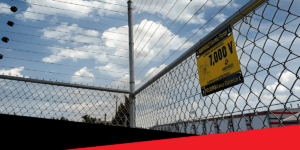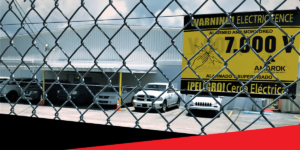You’ve got insurance, so you should be covered if there’s a theft at your business, right? Not so fast. Too often, businesses end up becoming complacent because of the false sense of security that insurance provides, leading to tragic results.
There are several hidden ways that insurance can let you down when you need it most. From skyrocketing premiums with every claim, to being dropped if you have too many claims, to multiple deductibles and hidden gaps in coverage, insurance is not always the reliable safety net you think it is.
Types of Commercial Property Insurance
Businesses usually require a combination of policies to cover all of their bases. Here’s a detailed breakdown of common policies:
- Commercial property insurance – Commercial property insurance covers the physical assets of your business such as your building, office equipment, and inventory.
- Professional liability – This type of insurance covers professionals from errors and omissions that cause damage to another party.
- Commercial auto – Commercial auto insurance covers vehicles used in service to your business. It is needed for both your company vehicles and for any time a privately owned vehicle is used for business purposes.
- Commercial umbrella insurance – Commercial umbrella insurance adds an extra layer of protection by covering losses that exceed the limits of your current insurance coverage.
- Employment practices liability – This type of insurance protects your business if you are sued for a violation of labor practices such as discrimination or wrongful termination.
- Workers’ compensation insurance – Workers’ comp helps you provide pay and medical benefits to workers who have been injured on the job.
- Cyber liability – Cyber liability covers your company from damages resulting from data breaches and cybersecurity problems.
- Business interruption insurance – This type of business insurance provides theft coverage, including lost income as a result of a covered event, such as a fire or storm damage
Shortcomings of Commercial Insurance
The type of insurance your business needs to cover property theft and damage is called commercial property insurance. Commercial property insurance covers your building, inventory, onsite assets, office supplies, computers, and equipment from covered incidents of theft, fire, storms and vandalism. Though premium prices vary, in general, commercial property insurance premiums typically cost around $3,000 for every $1 million in coverage.
A single commercial property insurance claim can increase premiums by 20%.
Your insurance company sets your premiums based on risk. The more risk your company presents, the higher your premiums. For every claim you file, your insurance company assumes that you are a greater risk than previously thought, so your insurance premiums increase. One claim can cause your premiums to increase by up to 20%.
After a Successful Theft, Thieves are Likely to Strike Again
In truth, if you have experienced a theft, your business is a bigger risk to the insurance company because thieves that have successfully robbed a place once are likely to strike the same place again. If thieves already know how to get in, access valuable items, and get out without getting caught, it simply makes sense that they’d keep hitting the same target (your business) that presents a high probability of success.
Compounding Premium Increases
With each commercial insurance claim, premiums don’t just increase, they compound. For example, if a business experiences three thefts in a year and files a claim for each incident, that business could expect its premiums to increase not just by 20%, but by 20% each time.
For example, if a business currently has $10 million in insurance coverage at a cost of $30,000 in premiums each year, three claims would increase the business’ insurance premiums as such:
With three theft claims, the business’ annual premium would almost double – from $30,000 to $51,840 a year – for the same coverage. That $51,840 a year will only increase in the future with yearly rate hikes, compounding the expense of each theft even further.
Protect Your Business With AMAROK
Multiple Deductibles
Imagine that thieves break into your parking lot and steal five catalytic converters from five different delivery trucks. Your insurance deductible is $1,000. You think, “Ugh, that’s $1,000, but at least everything is covered.” Not exactly.
You see, the deductible is per unit covered, not per incident. That means you’ll be paying $5,000 in deductibles, $1,000 for each vehicle. At that point, it might be more cost-effective to pay out of pocket for the stolen catalytic converters, considering how much your business will pay in deductibles plus the increase in insurance premiums after filing a claim.
Theft Claims Are Often Denied
Insurance companies are notoriously hard to deal with. After all, they don’t make money by paying out every claim that’s filed. There’s a long list of reasons why your business insurance might deny your theft claim, including:
- You don’t have proper documentation that the items were ever in your possession or were actually stolen.
- You can’t provide evidence of an actual break-in. This can occur if an employee left a door or gate unlocked and a criminal walked right in, leaving no signs of forced entry.
- You can’t provide an accurate valuation of the items stolen.
- Your organization did not perform proper preventative maintenance on your perimeter security fence, gates, locks, windows, doors or security system.
- You may not have the right kind of business insurance.
The world of commercial property insurance can be complicated, it’s no wonder business owners don’t know if they’re covered for theft until it’s too late.
Relying on Insurance to Cover Losses is Not Sustainable
Don’t fall victim to the false sense of security that insurance provides. While insurance coverage is important, it’s unsustainable to depend on it to cover all of your losses from theft.
The most economical way to avoid these insurance headaches is to prevent theft from happening in the first place. Is your business vulnerable to break-ins? Is your security plan as strong as it should be to prevent theft? Find out with a complimentary Threat Assessment from AMAROK. Our security experts will analyze your current security plan, uncover hidden weaknesses, and show you how to fortify your business against theft and the insurance issues that come with it.




